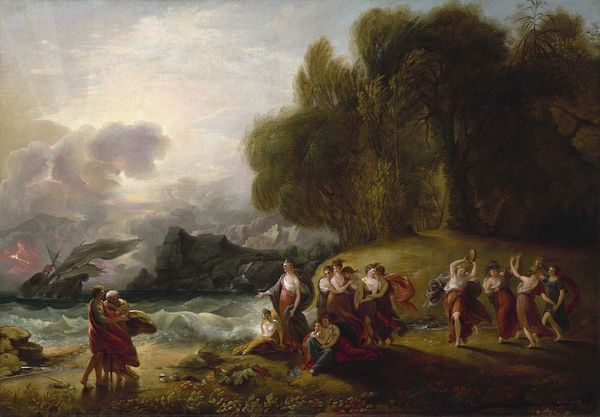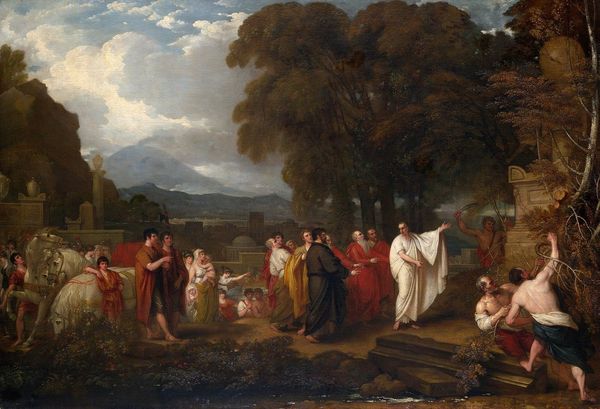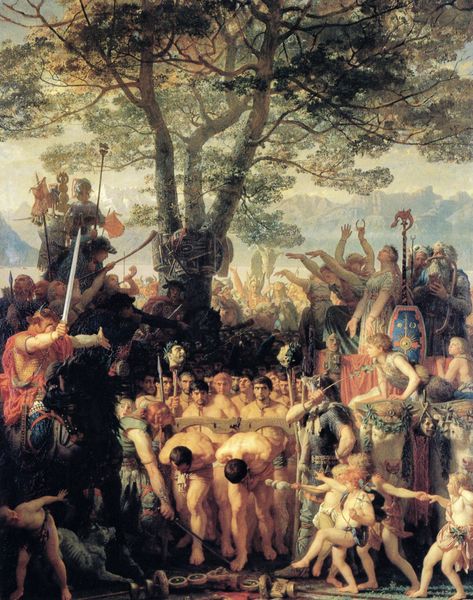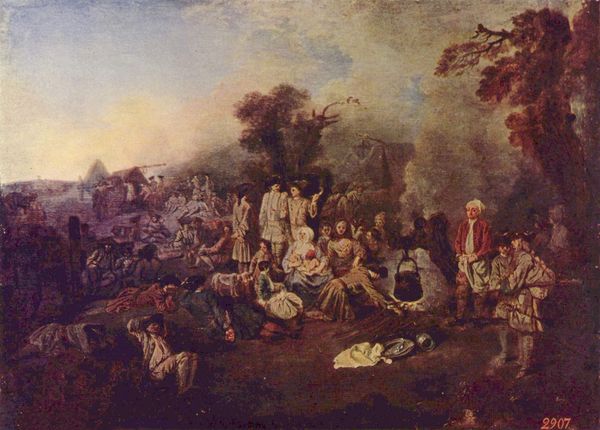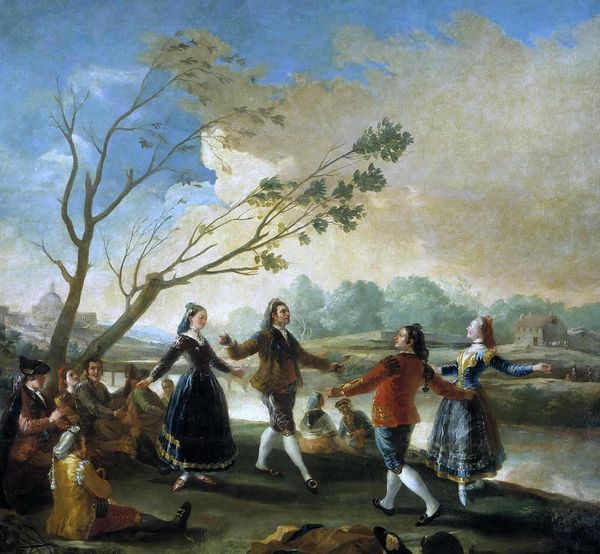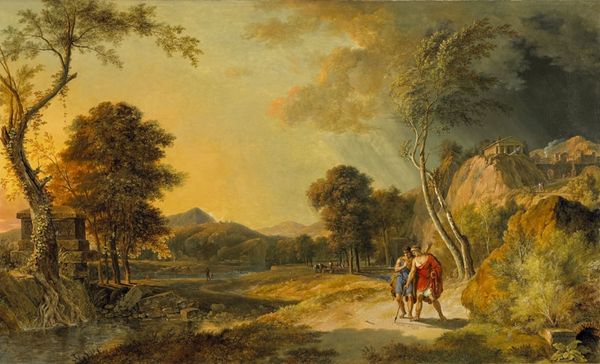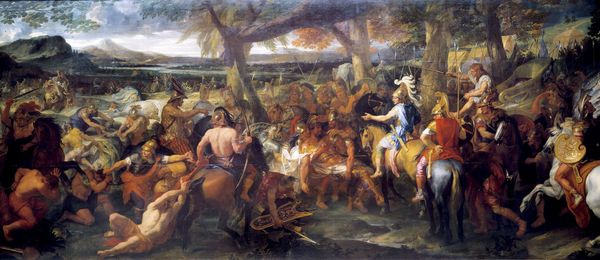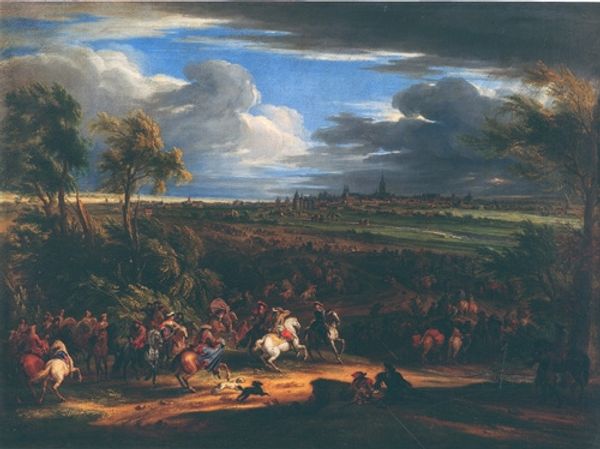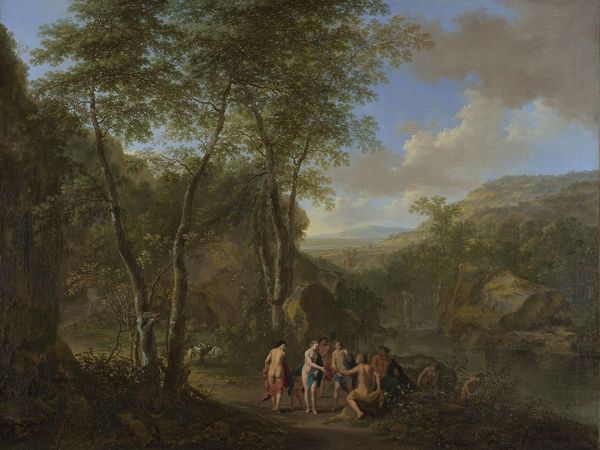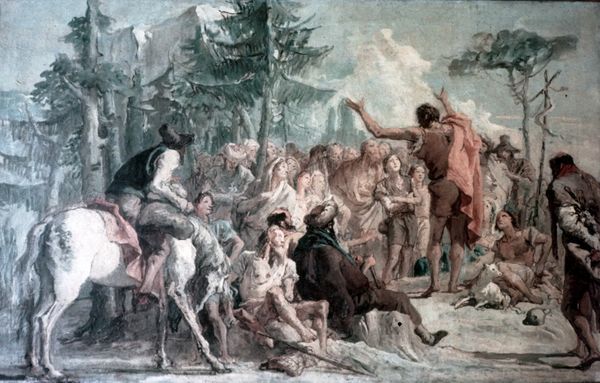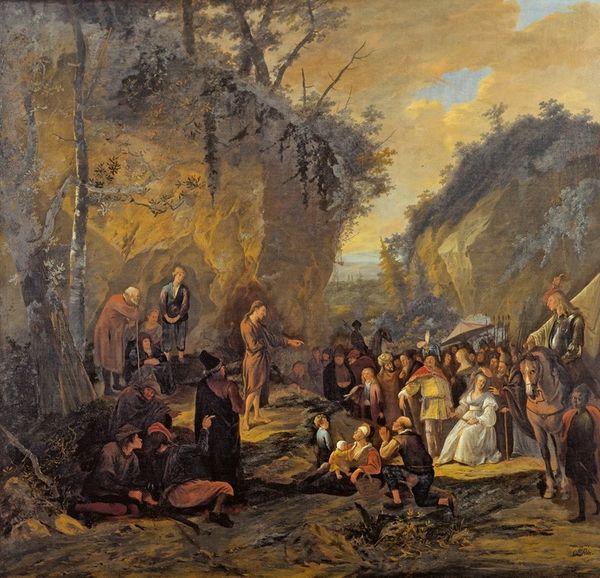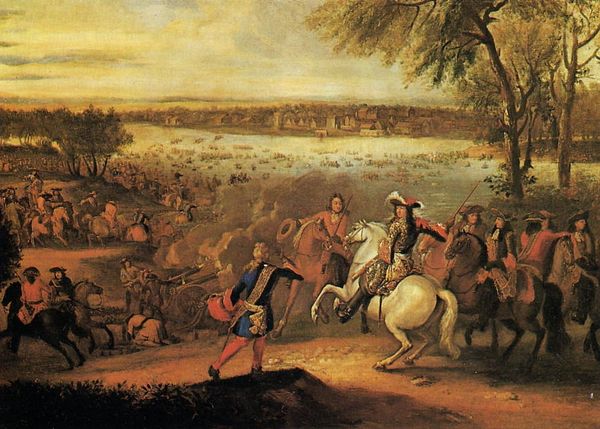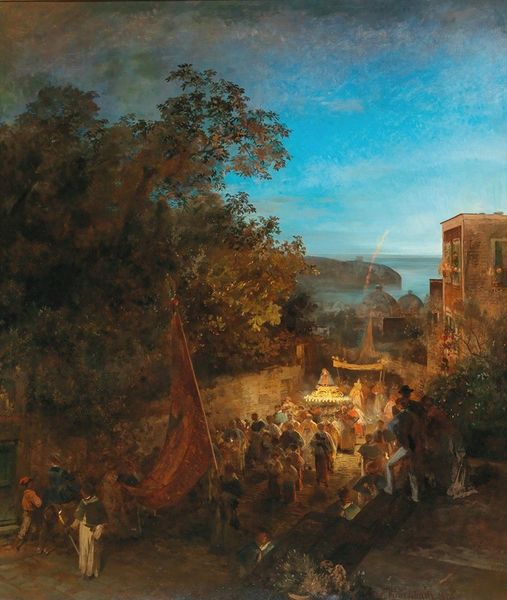
oil-paint
#
allegory
#
narrative-art
#
baroque
#
oil-paint
#
landscape
#
oil painting
#
classicism
#
mythology
#
painting painterly
#
history-painting
Dimensions: 142 x 248 cm
Copyright: Public domain
Claude Lorrain painted 'Landscape with the Adoration of the Golden Calf' using oil on canvas in the 17th century. Lorrain was a French artist working in Rome, and here he takes a biblical subject from Exodus and transforms it into an idealised vision of the Italian countryside. The image creates meaning through visual codes, cultural references and historical associations. The biblical subject provides a narrative pretext for a scene that comments on the social structures of Lorrain’s own time. We see a classical landscape, a harmonious and ordered space with a religious scene occurring within it, perhaps reflecting how powerful institutions like the Catholic Church sought to imbue everyday life with spiritual significance, as well as a controlled view of the past. To understand Lorrain better, historians consult letters, biographies, and period documents, uncovering the social conditions that shaped his artistic production. The meaning of Lorrain's work, like all art, is contingent on its social and institutional context.
Comments
No comments
Be the first to comment and join the conversation on the ultimate creative platform.
